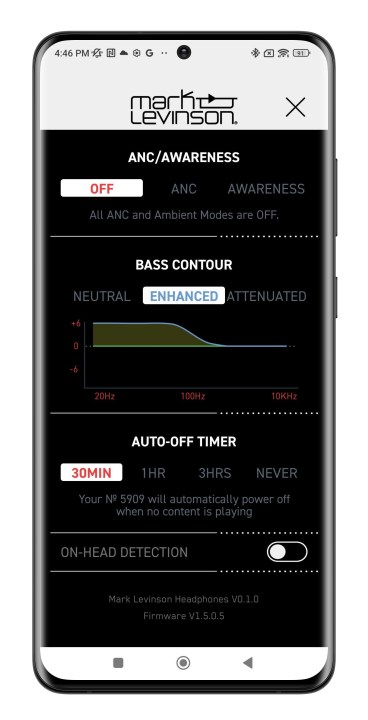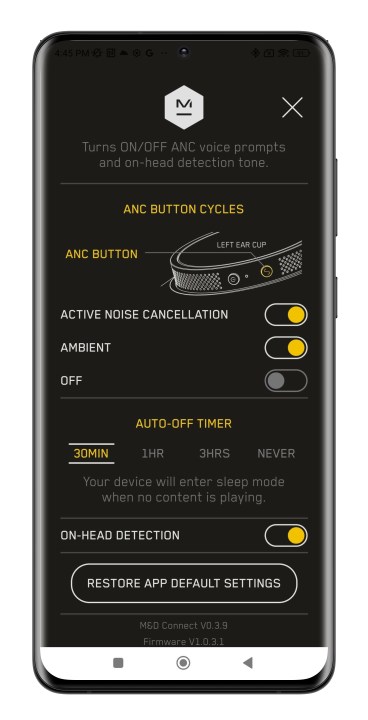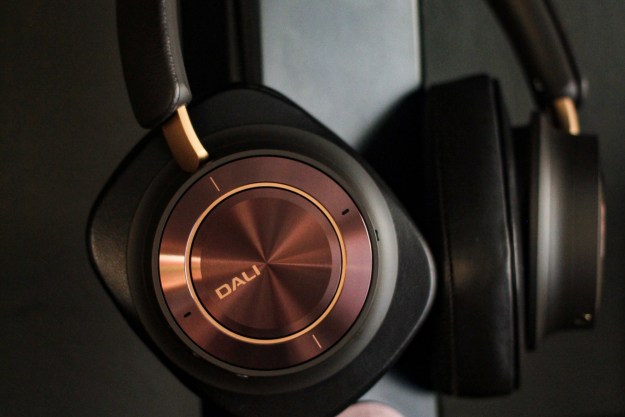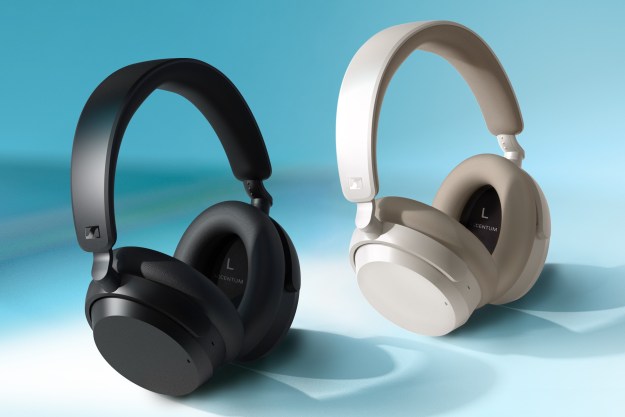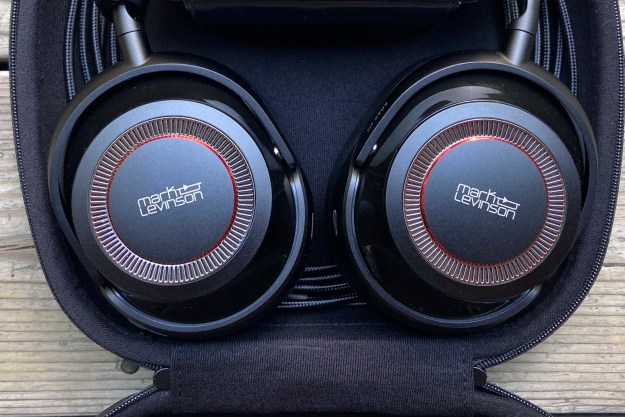
- Sumptuous sound
- Very comfortable
- Excellent call quality
- Good ANC and transparency
- Excellent codec support
- Good case, tons of accessories
- Over-the-top expensive
- Annoying voice announcements
- Needs ANC mode control
When it comes to wired headphones, there’s seemingly no limit to how much you can spend. From the hand-crafted technology of the $59,000 Sennheiser Orpheus HE/1, to the gold and diamond-encrusted $120,000 Focal Utopia by Tournaire, the wired headphone world is a playground for wealthy audiophiles.
But over in the wireless headphones space, things have been far tamer. Sure, you can still spend yourself silly by adding precious metals and jewels, but when it comes to buying an objectively better set of cans, manufacturers haven’t strayed outside of three-figure pricing — until this year. With the arrival of the Mark Levinson No. 5909 from the Harman Luxury Audio group, new ground has been broken. With a list price of $999, I have no problem calling these the first wireless headphones to hit the $1,000 threshold. But even if you don’t round up, the No. 5909 are easily the most expensive wireless headphones you can buy.
Are they worth it? Only one way to find out.
What’s in the box?
In keeping with Mark Levinson’s reputation for high-end audio gear, the No. 5909 are beautifully appointed. They come nestled in a hard-shell carry case wrapped in a material that looks like brushed black metal but is actually soft to the touch. Inside, you’ll find a generous number of cables, including a very long, 13-foot USB-C to 3.5 mm audio cable; a shorter four-foot USB-C to 3.5 mm audio cable; and a four-foot USB-C to USB-C charging cable that can also serve as a digital audio cable. All three cables are braided and tangle-free, with bespoke Mark Levinson logos adorning the USB-C connectors — very slick.
You also get three adapters: a USB-A to USB-C in case your charger or PC uses the larger port, a 3.5mm to ¼-inch headphone adapter, and a two-prong airplane adapter for aircraft that still use this outdated design. With the exception of the 13-foot cable, all of these extras are stowed in a central zippered storage section.
It’s a fully premium experience, exactly as you should expect for this price.
Design

What makes a set of headphones look like you just spent $1,000 — and is that even what you want? Mark Levinson seems to have wrestled with these questions a fair bit in coming up with the design for No. 5909, and it shows. It didn’t shy away from premium materials like anodized aluminum and leather, and there’s a lovely, seamless line as the tubular headband sliders emerge from each side and then form the forks that hold the earcups — with nary a hinge or wire to be seen. On our Pearl Black loaner (they’re also available in Ice Pewter and Radiant Red), the red headband stitching perfectly complements the thin red accent ring on the earcups. But there’s also a fair amount of plastic, too.
In some cases, that plastic gets dressed to the nines, as is the case with the main earcup shells, which have been given an “automotive-grade metallic” paint job. It has a nice sparkle, but it’s also a fingerprint magnet. In other cases, chrome accents are used to provide another automotive-inspired cue, as with the perforated ring that encircles the outer aluminum cover.
But to my eye, the overall effect does not scream luxury or high-end. They look fine — no complaints at all. But, it’s worth repeating: These cans cost one clam less than a grand.
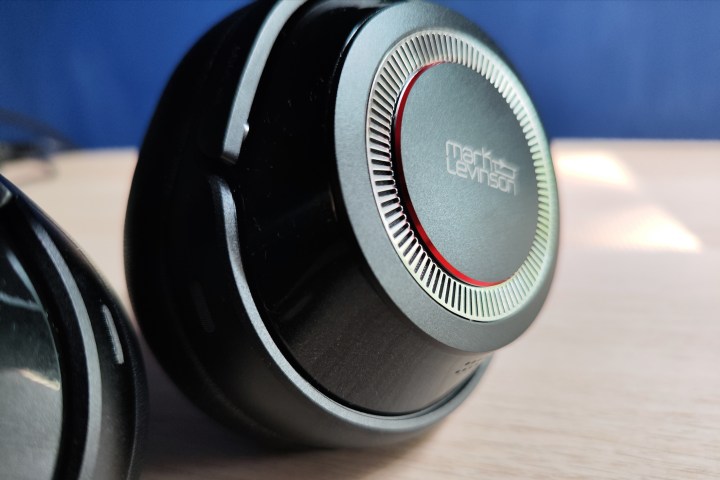
That price is even more insane when you compare them to the more affordable $599 Master & Dynamic MW75, which make extensive use of anodized and polished aluminum, tempered glass, and no plastic at all. Seen side-by-side, the No. 5909 kind of look a little cheap — but maybe that’s just me.
- 1. Mark Levinson No. 5909 (left) and Master & Dynamic MW75.
- 2. Mark Levinson No. 5909 (left) and Master & Dynamic MW75.
- 3. Mark Levinson No. 5909 (left) and Master & Dynamic MW75.
By the way, I’m not bringing the MW75 into this review on a whim, or just for a comparison to another pricey, high-end set of wireless headphones. Their shape, weight, headband and slider construction, driver size and materials, and plenty of other characteristics are either identical — or so close they may as well be. I reached out to both companies for their comments. Master & Dynamic declined to comment, while a spokesperson for Harman Luxury Audio acknowledged that the two products come from the same original design manufacturer (ODM).
Throughout the rest of this review, I’ll be calling out the small differences, so you can decide if the No.5909 justify their $400 price premium over the MW75.
Comfort, controls, and connections
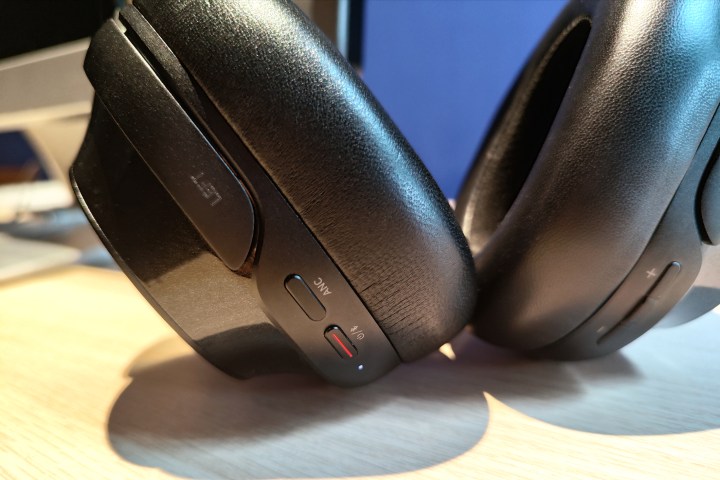
As luck would have it, we’ve hit one of the big differences between the No. 5909 and the MW75: comfort. This might sound crazy after I just told you how similar these cans are, but the No. 5909 are more comfortable for longer periods. Yes, even though they actually weigh two whole grams more than the MW75, they feel lighter on your head. I believe the secret is the No. 5909’s ear cushions, which are a little thinner and have a slightly larger opening for your ears.
This combination does two things: brings the mass of the earcups closer to your head, which cuts down on the sensation of weight, and distributes the headband’s clamping force over a wider area (while simultaneously increasing grip).
The difference was so noticeable that I had to double-check the specs — I had fully convinced myself the Mark Levinsons were lighter.
All of this to say, they’re incredibly comfortable. Even after two hours of continuous use while seated and walking, I didn’t detect any pressure points. They even seem to do a decent job of dissipating heat, which is remarkable given that they’re leather padded and not vented at all.

The controls are simple and get the job done. A power/pairing button and an active noise cancellation (ANC) mode button sit on the left earcup, while a triple-combo multifunction/plus/minus set of buttons are on the right. This gives you everything you need to play/pause, skip forward/back, volume up/down, call answer/end, hail your phone’s voice assistant, and adjust your ANC.
With the optional ear-detection feature enabled, the headphones can auto-pause and resume your tunes when you remove and replace them from your head, but again, just like the MW75, it’s a bit quirky; you only get a ten-second window to resume, otherwise, you’ll have to start playback manually.
My one criticism is that it can be hard to identify the central multifunction button with your thumb because it’s small and only barely raised above the height of the plus/minus buttons that flank it. I prefer the layout of these controls on the MW75, which separates them into individual, spaced-out buttons. Plus, the multifunction button sticks out more prominently than the other two.
The No. 5909 uses Bluetooth 5.1 and enjoys a very good wireless range and stability. It’s also equipped with Multipoint, so you can connect to two devices simultaneously and switch back and forth between them without needing to re-pair. It worked effortlessly between my Mac and my iPhone, as well as with a Xiaomi 12 Pro.
- 1. Mark Levinson mobile app.
- 2. Master & Dynamic mobile app.
Mark Levinson has thrown the proverbial kitchen sink at these cans regarding Bluetooth codecs. You get ‘em all: SBC, AAC, aptX Adaptive, and LDAC. Those last two are key; they are the two most widely used wireless hi-res codecs, each capable of delivering up to 24-bit/96kHz lossy audio under the right conditions. It’s a rarity to see them both supported, as most companies tend to pick one or the other. aptX Adaptive is newer, but it’s not used on Android phones older than about two to three years. With LDAC, even phones going back to Android 8.0 can get excellent wireless sound from the No. 5909. Sadly, even the newest iPhone — thanks to Apple’s ongoing refusal to license either aptX or LDAC — will be limited to lossy, 16-bit wireless audio. I’ll discuss this limitation more in the sound quality section.
Sound quality
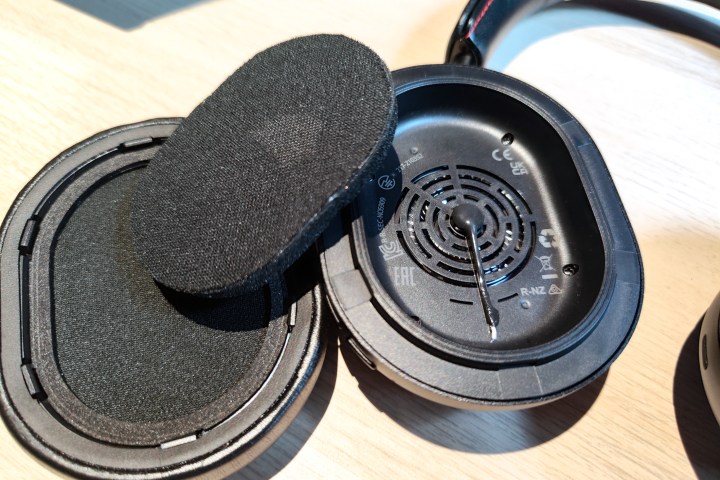
So, how do the world’s first $1,000 wireless headphones sound? In a word, superb.
The No.5909 deliver an intoxicating blend of precision, detail, and beautifully balanced frequencies. They’re marked by a bass response that seems to live in its own separate sonic plane of existence — it’s tight, fast, and never obscures the mid-tones. It’s also deliciously articulate. The opening notes of Wicked Games by We Are Wolves are a salvo of deep electronica — the kind of sound that can get smeared by distortion or lose some of its impact when there isn’t sufficient resonance. The No.5909 handle them with striking dexterity and a depth you can feel in your chest.
They are, by a very small margin, the best wireless headphones I’ve ever worn.
That’s with the bass contour EQ setting in the Mark Levinson app set to “enhanced.” If you select one of the other two tweaks (neutral or attenuated), you can ease back on the bass throttle, leaving everything else perfectly intact.
It’s worth trying those modes for content, like spoken word or classical, but as someone who loves it when bass is done right, I kept the enhanced mode on for most of my time with these cans.
- 1. Mark Levinson No. 5909 (top) and Master & Dynamic MW75.
- 2. Mark Levinson No. 5909 (top) and Master & Dynamic MW75.
- 3. Mark Levinson No. 5909 (left) and Master & Dynamic MW75.
The soundstage can be thought of as carefully executed. By that, I mean it’s generous enough to deliver a sense of space and immersion, but not so wide that it becomes distracting. Most of the perceived sound lives somewhere between just inside your ears to about a foot outside your head, or at least, that’s how it felt to me.
But what really caught my attention is the way you can discern the vertical space within that stage. There’s a moment in Feel It Still by Portugal. The Man, around the 0:49 mark when you hear a high-pitched trilling, and I swear it felt like I could measure the distance from the floor to where that sound was coming from.
That’s the kind of performance that makes you want to pull out every single one of your favorite tracks and listen to them one more time, in case the No.5909 reveal a subtle detail you’ve never heard before.
They are, by a very small margin, the best wireless headphones I’ve ever worn.

But, there are a few more things that need to be said about the sound on these cans.
First, codecs matter — big time. I used lossless 16 and 24-bit tracks from Amazon Music and Apple Music for most of my testing on a MacBook Air M1, an iPhone 11, a Google Pixel 5, and a Xiaomi 12 Pro. The Apple devices couldn’t hold a candle to the Android phones with their LDAC and aptX Adaptive codecs, respectively. It was night and day: better clarity, more detail, greater dynamic range.
I’ve said before that these high-quality codecs can only be really appreciated on high-end headphones and earbuds, and the No. 5909 reinforced that belief. When your gear is capable of resolving that extra detail, you can hear it.
To get an equivalent level of sound from a Mac, you’ll need to use the included USB-C charging/digital music cable, but that trick won’t work on an iPhone. Instead, you’ll need to buy an external DAC/amp and use the included analog cable.
The No. 5909 are fantastic for calls in any environment.
Second, ANC matters; this was a surprise. Turning ANC on and off significantly impacted sound, mostly in the lower registers. With ANC off, some of that glorious bass just disappears. The same is true when you use the cans with the power turned off via either analog or digital cables.
Third, and perhaps most importantly, they do sound a bit better to me than the Master & Dynamic MW75, despite the fact that both use a nearly identical set of 40mm beryllium drivers. But, it’s an improvement you can only appreciate by going back and forth between these two awesome headphones over a variety of tracks, and even then, it can be pretty tough to qualify. Slightly better clarity, a wee bit more detail, a hint of extra oomph in the bass: To someone with golden ears and a fat wallet, maybe these tiny increments are absolutely worth four more benjamins, but I cannot promise, in good conscience, that you’ll feel the same way.
Active noise cancellation and transparency mode
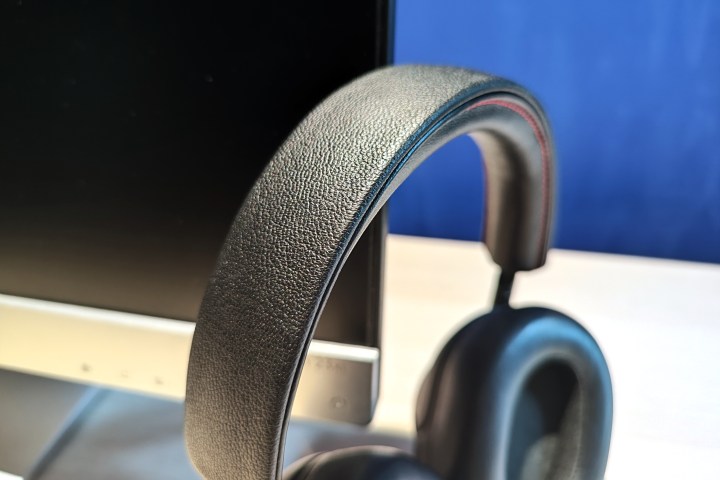
The No. 5909 are very good at canceling noise, but don’t expect any miracles. You get three ANC modes to choose from in the Mark Levison app — high, adaptive, and low — and I didn’t notice much difference between them. Most background sounds, from coffee house chatter to droning machinery, are significantly diminished. It’s not as good as what you’ll get from the Sony WH-1000XM4 or XM5 or the Bose Noise Canceling Headphones 700, but it does the job.
What I did notice is that they behave similarly to the three ANC modes on the MW75, which is to say, they produce a small but noticeable amount of hiss when music isn’t playing, and when you change modes, the headphones take two seconds to do so, during which time your music is interrupted and a voice announces the new mode. Master & Dynamic let you turn these voice prompts off, but Mark Levinson doesn’t.
Transparency modes (voice pass and ambient) are also very good, giving you a strong connection to the outside world when you need it.
But, for some reason, the No. 5909 did not borrow one of the MW75’s best features: There’s no way to choose the ANC modes that are cycled when you press the ANC button on the left earcup. It’s always ANC > transparency > off. On the MW75, the app lets you choose any two, or all three. Hopefully, Mark Levinson will issue an update to its software that will fix this omission.
Call quality
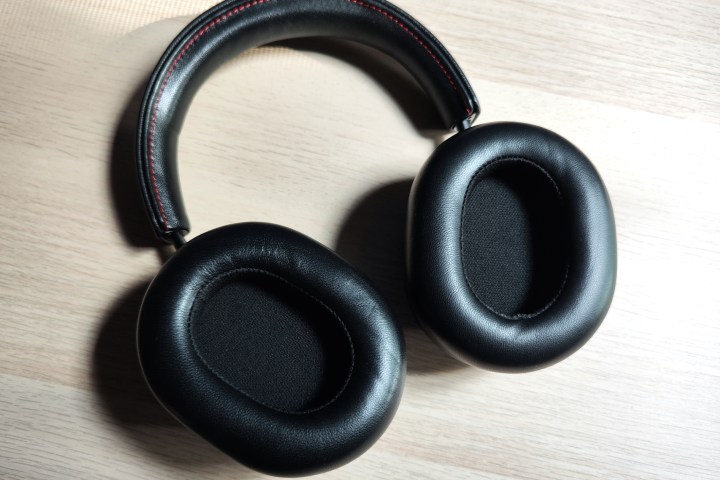
Given what I had experienced so far, I wasn’t expecting the No. 5909 to offer significantly better call quality than the Master & Dynamic MW75 — which are good but not great — but I was pleasantly surprised. The No. 5909 are fantastic for calls in any environment.
During my test recording walking down a busy street, I was amused as a very loud truck passed within inches of the sidewalk, and even said, “Well that’s going to be a good test.” Later, when I played it back, all you could hear was my voice — the truck had been entirely erased.
Not that conditions were especially windy while I was testing, but there wasn’t even a hint of wind noise.
This puts the No. 5909 among the very best wireless cans for calls, neck and neck with the Sony WH-1000XM5, Bose Noise Cancelling Headphones 700, JBL Tour One, and Apple AirPods Max.
The only caveat: When calling, the No. 5909 automatically shut down ANC and enable some passthrough audio so you can hear your voice more clearly. You can’t change that, so if you plan on calling from loud locations, your callers might not be aware of the sound, but you will.
Battery
Mark Levinson claims up to 34 hours of battery life without using ANC and 30 hours when it’s turned on. From what I can tell, these numbers are almost bang-on and maybe even a tad conservative when your volume is set at 50% or lower.
It hardly holds a candle to the exemplary battery life of the Sennheiser Momentum 4 Wireless at 60 hours of ANC-enabled play time, but it’ll get you through a full day (or flight) with ease, and for most folks, that’s enough.
If you run low, a 15-minute quick charge will give you an extra six hours of time, which is also very good for a set of wireless headphones.
Our take
The Mark Levinson No. 5909 are luxurious, comfortable, superb-sounding wireless noise-canceling headphones. If you want the best, this is it. But I don’t think there’s enough of a difference between them and the very similarly-equipped $599 Master & Dynamic MW75 to justify that price.
Is there a better alternative?
By now, if you haven’t already guessed, I’m a fan of the $599 Master & Dynamic MW75. And while they aren’t as good for sound quality and call quality, there’s no way that the No. 5909 are $400 better.
It goes without saying that if you simply want a great set of wireless headphones for $400 or less, our normal recommendations still apply: You can’t go wrong with Sony’s $400 WH-1000XM5, its $348 WH-1000XM4, or Sennheiser’s $350 Momentum 4 Wireless.
How long will they last?
The No. 5909 are very well built, from high-quality materials, and the ear cushions are easily replaced if they wear out. The battery is big enough that even if its capacity drops by 50% over time, they’ll still be perfectly serviceable for all but the longest listening sessions.
With a very protective hard-shell case, I see no reason why these pricey cans shouldn’t last for a very long time.
Harman Luxury Audio backs them with a two-year parts and labor warranty, which is double the standard one-year warranty.
Should you buy them?
If dropping a thousand dollars on a set of headphones is something you’re willing to do in order to own the best, even if it’s only a bit better than the next-best-thing, go for it. You’ll probably sleep well at night knowing that you’ve got the best that money can buy.
But if you think that investments of this nature should be proportional, save yourself some money and go for one of our other recommendations. It’s the rational thing to do.
Editors' Recommendations
- Nothing’s new earbuds upstage Apple, Google, and Amazon by embedding ChatGPT
- The 6 best wireless headphones for watching TV in 2024
- Next-gen wireless headphones will get lossless hi-res audio with a little help from Qualcomm
- Best Bose 700 deals: Save $151 on the wireless headphones today
- First listen: EarFun’s first over-ear headphones are impressive for $80












